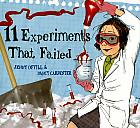 Kids Search by EBSCOhost www.ebscohost.com
Kids Search by EBSCOhost www.ebscohost.com
The trusted family of EBSCOhost products offers a Kids Search version that is user friendly for those young students just developing their research skills.
Summary: EBSCOhost Kids Search is a wonderful way to introduce a research database to school age children filled with credible journal articles. The tool bar at the top of the home page allows students to search the dictionary, encyclopedia, and images. They can search their topic by typing it in the search bar or they can do a detailed search using Boolean terms and other limiters. They may search magazines, newspapers, books & encyclopedias, biographies, or primary source documents. They can also limit their search by full text, publication date, peer reviewed, number of pages, cover story, publication type, Lexile reading level, PDF full text, and images and title within the Funk & Wagnalls New World Encyclopedia. Once the results are tabulated, the student can then print out the article, e-mail it, save it, or add it to a folder. The user also has the ability to search by topic if they click on the picture box that refers to the topic on the home page. An area for users to search by top searches and a spotlight topic is also available on the home page. This database is a great way to encourage higher levels of thinking when it comes to research and developing information literacy.
Qualitative Analysis: EBSCOhost’s Kids Search is a database with several text tools that make it easy for the student just learning how to conduct credible research. Because it is a subscription the institution must pay for, the patron must have a library membership that gives them access or a user name and password. The home page has a bright green and orange color scheme which is well organized and not cluttered. The headings leading the student to the different ways of searching are clearly defined with larger text within the text box for the type of search. The graphics include realistic cartoon-type drawings that would appeal to even the older elementary student. The articles include realistic photographs. This writer found the “Search by Topic” frustrating to use, however. Every time a query was conducted, it said “No results were found.” The detailed search option is filled with different types of limiters mentioned in the above summary. This format is something young researchers need to become familiar with as they develop their research skills.
Genre and/or Subject Area: Paid Subscription Database
Age or Interest Level: Grades K-8
Personal thoughts: I am familiar with the EBSCOhost databases I have used for my own research needs over the years. I think it is great that there is a research database specifically designed for elementary students that is colorful and easy to use.


